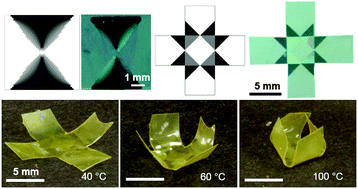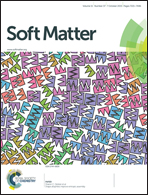Topology optimization for the design of folding liquid crystal elastomer actuators†
Abstract
Aligned liquid crystal elastomers (LCEs) are capable of undergoing large reversible shape change in response to thermal stimuli and may act as actuators for many potential applications such as self-assembly and deployment of micro devices. Recent advances in LCE patterning tools have demonstrated sub-millimetre control of director orientation, enabling the preparation of materials with arbitrarily complex director fields. However, without design tools to connect the 2D director pattern with the activated 3D shape, LCE design relies on intuition and trial and error. Here we present a design methodology to generate reliable folding in monolithic LCEs designed with topology optimization. The distributions of order/disorder and director orientations are optimized so that the remotely actuated deformation closely matches a target deformation for origami folding. The optimal design exhibits a strategy to counteract the mechanical frustration that may lead to an undesirable deformation, such as anti-clastic bending. Multi-hinge networks were developed using insights from the optimal hinge designs and were demonstrated through the fabrication and reversible actuation of a self-folding box. Topology optimization provides an important step towards leveraging the opportunities afforded by LCE patterning into functional designs.


 Please wait while we load your content...
Please wait while we load your content...